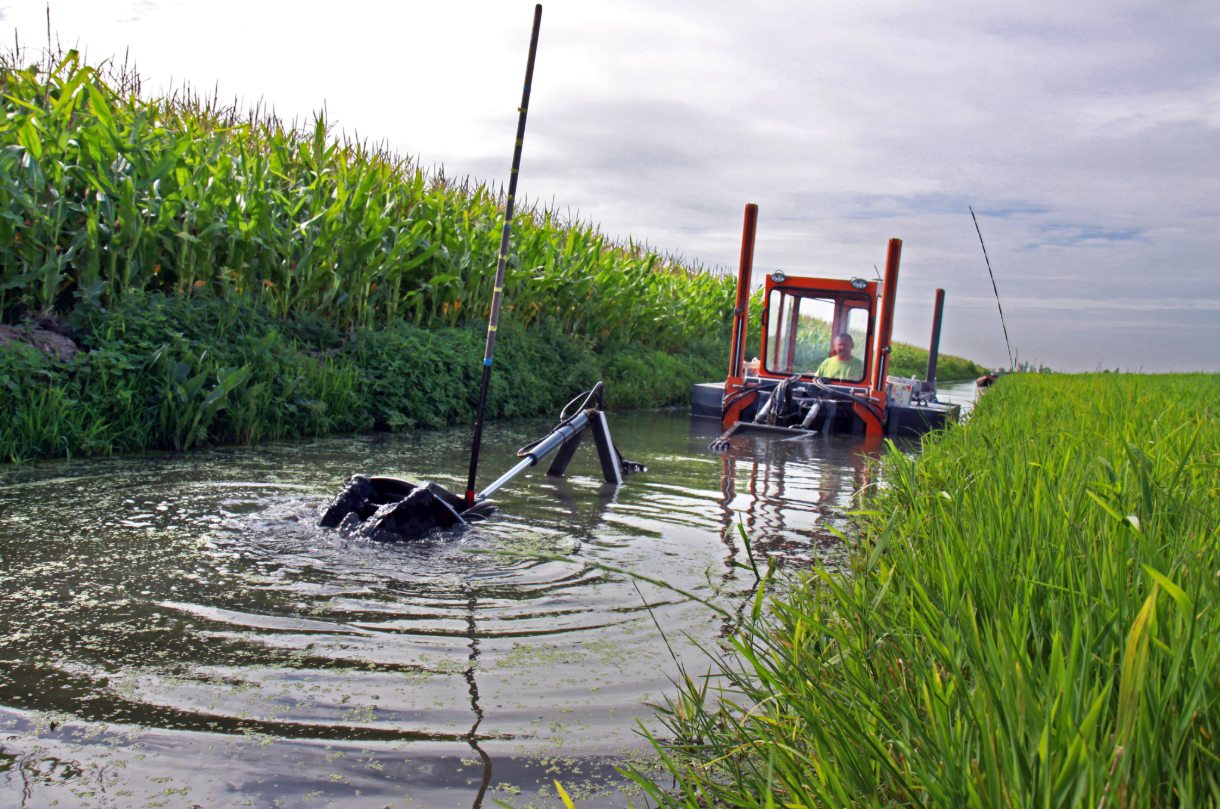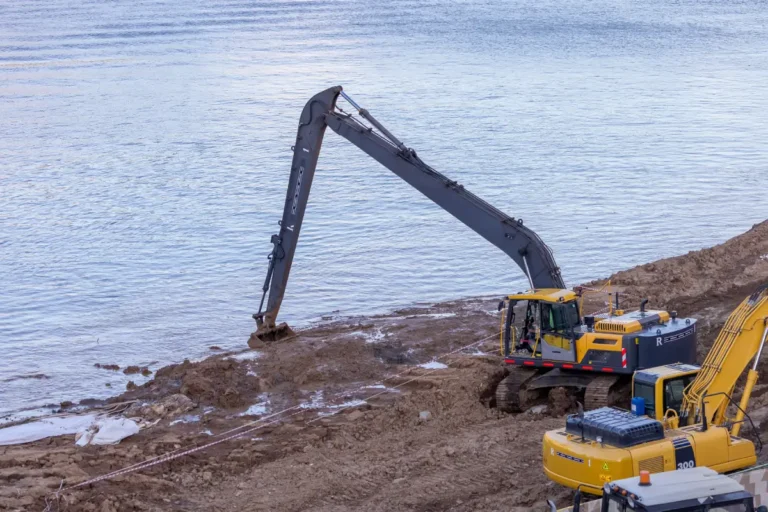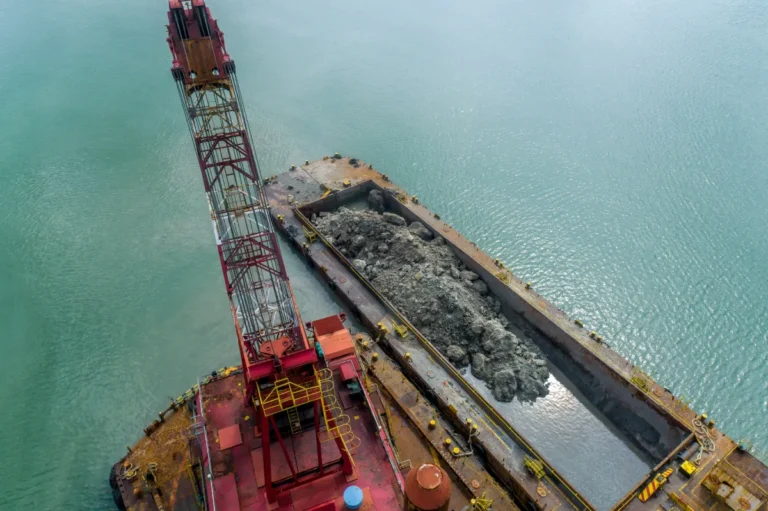Maintaining a healthy pond requires regular removal of accumulated silt, sludge, and debris that can reduce depth, harm aquatic life, and affect water quality. Modern pond dredging equipment plays a vital role in restoring ponds efficiently and with minimal environmental impact. Whether using small pond dredging equipment for residential projects or larger hydraulic dredging equipment for commercial applications, choosing the right system ensures precise sediment removal, better water circulation, and long-term pond health.
Understanding Cutterhead Technology for Pond Dredging
A cutterhead dredge is a type of pond dredging equipment specifically designed to remove sediment and debris with high precision. The cutterhead, which is a rotating tool mounted at the intake of the dredge pump, breaks up compacted materials at the bottom of the pond. Once loosened, the sediment is drawn into the suction line and pumped away, typically using hydraulic dredging equipment to transport the slurry to a disposal or containment area. This process ensures consistent material removal and helps maintain the pond’s designed depth and water flow.
Compared to other pond dredging methods, cutterhead dredges offer several advantages. Manual dredging is labor-intensive and often limited to shallow areas, making it inefficient for larger or heavily silted ponds. Mechanical methods, such as excavators or clamshell buckets, can remove bulk material but typically lack precision and may disturb surrounding banks or aquatic habitats. Suction-only dredges can handle soft sludge but often struggle with compacted sediments. Cutterhead technology combines the strengths of mechanical cutting and suction, making it one of the most effective solutions for accurate and controlled sediment removal.
Cutterhead attachments are particularly valuable for small pond dredging equipment, as they allow operators to tackle sediment buildup in confined or residential ponds without mobilizing large machinery. When paired with compact hydraulic dredging equipment, these attachments deliver reliable performance in shallow environments where access is limited. Their ability to break up and pump material in a single operation reduces downtime, improves efficiency, and minimizes environmental impact during pond maintenance.
Types of Pond Dredging Equipment and Their Applications
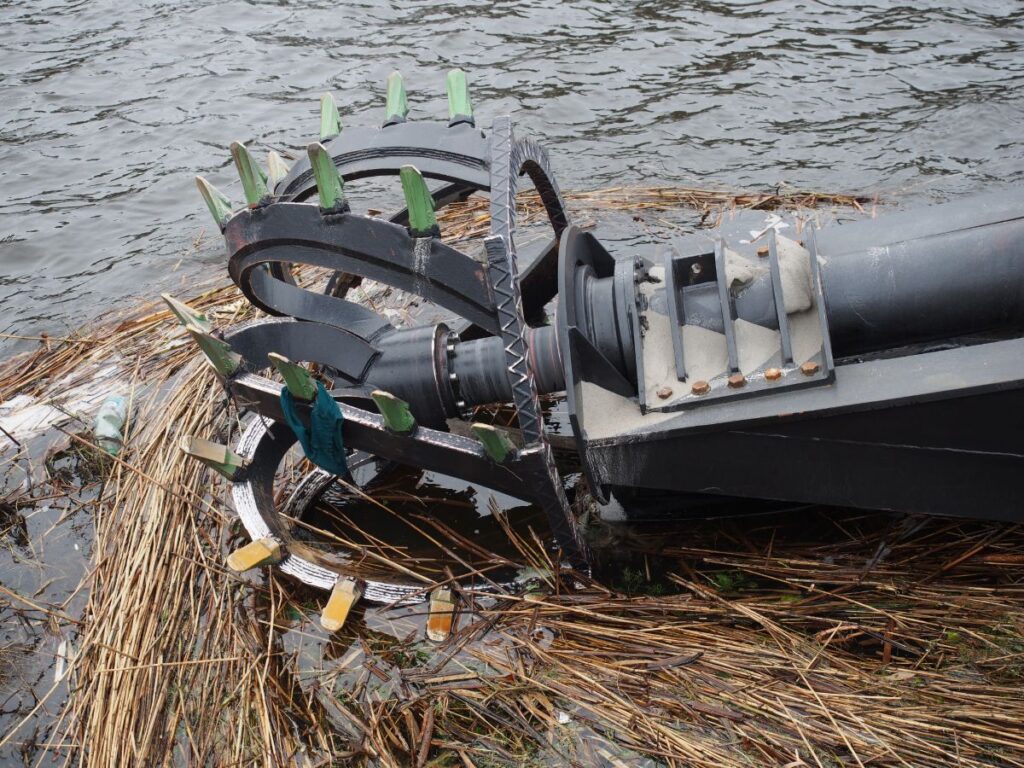
Different types of pond dredging equipment are designed to meet specific project requirements, ranging from small residential ponds to larger commercial or municipal applications. Selecting the right equipment ensures efficient sediment removal while minimizing environmental disturbance.
Hydraulic Dredging Equipment: High-Precision and Continuous Sediment Removal
Hydraulic dredging equipment is ideal for projects that require consistent and precise material removal. This type of system uses a pump to create a slurry of water and sediment, which is then transported through discharge pipelines to a designated containment or dewatering area. The continuous operation of hydraulic dredges allows for faster progress on large or heavily silted ponds. These systems are especially effective for removing fine sediments and maintaining the pond’s designed depth without repeated repositioning.
Small Pond Dredging Equipment: Portable Solutions for Residential or Small-Scale Projects
For homeowners, property managers, or small-scale contractors, small pond dredging equipment provides a compact and portable option for maintaining water quality and depth. These systems are easier to transport and set up compared to larger dredges, making them ideal for confined spaces or ponds with limited access. While they typically offer lower pumping capacities, they are highly effective for routine maintenance, sludge removal, and localized sediment buildup.
Stationary vs. Floating Equipment: Matching Equipment to Project Needs
Pond dredging equipment can be either stationary or floating, each offering distinct advantages.
- Stationary dredging equipment is anchored to the shoreline or fixed in position, making it suitable for smaller ponds or targeted dredging where precise control is required.
- Floating dredging equipment is mounted on pontoons or small barges, allowing it to move freely across the pond. This setup is ideal for larger ponds or projects requiring uniform sediment removal across a wide area.
Choosing between stationary and floating configurations depends on factors such as pond size, access limitations, and the volume of sediment to be removed. Often, combining floating platforms with hydraulic dredging equipment provides the most versatile solution for comprehensive pond maintenance.
Features That Define the Best Cutterhead Pond Dredging Equipment
The effectiveness of any pond dredging equipment depends on the design and features of its cutterhead system. Choosing equipment with the right capabilities ensures efficient, precise sediment removal and long-term reliability for pond maintenance projects.
Adjustable Cutterhead Rotation for Precise Sediment Targeting
A high-quality cutterhead should offer adjustable rotation speeds to match different sediment conditions. Slow rotation allows for careful removal of soft silt without disturbing surrounding areas, while higher speeds can break up compacted material efficiently. This flexibility improves accuracy and reduces unnecessary sediment displacement, which is especially valuable for small pond dredging equipment used in confined environments.
Compatibility with Hydraulic Dredging Equipment for Efficient Slurry Pumping
The best cutterhead systems integrate seamlessly with hydraulic dredging equipment, allowing for smooth slurry transfer from the pond bottom to the discharge area. By breaking up and feeding sediment directly into the suction line, the cutterhead ensures a continuous pumping process, reducing downtime and maximizing overall dredging efficiency.
Durable, Wear-Resistant Components for Abrasive Sediment
Sediment often contains sand, gravel, or other abrasive materials that can quickly wear down low-quality cutterheads. Premium pond dredging equipment uses hardened steel or wear-resistant materials for the cutter teeth and housing to extend operational life. This durability not only reduces maintenance costs but also maintains consistent dredging performance over time.
Easy Transport and Setup for Small-Scale Pond Maintenance
Many dredging projects, particularly residential or small commercial ponds, benefit from equipment that is compact and easy to deploy. Cutterhead systems designed for small pond dredging equipment are often modular, lightweight, and compatible with floating or portable platforms. Quick setup and simple mobility reduce labor time and make routine sediment management more practical for smaller-scale operations.
Factors to Consider When Choosing Pond Dredging Equipment
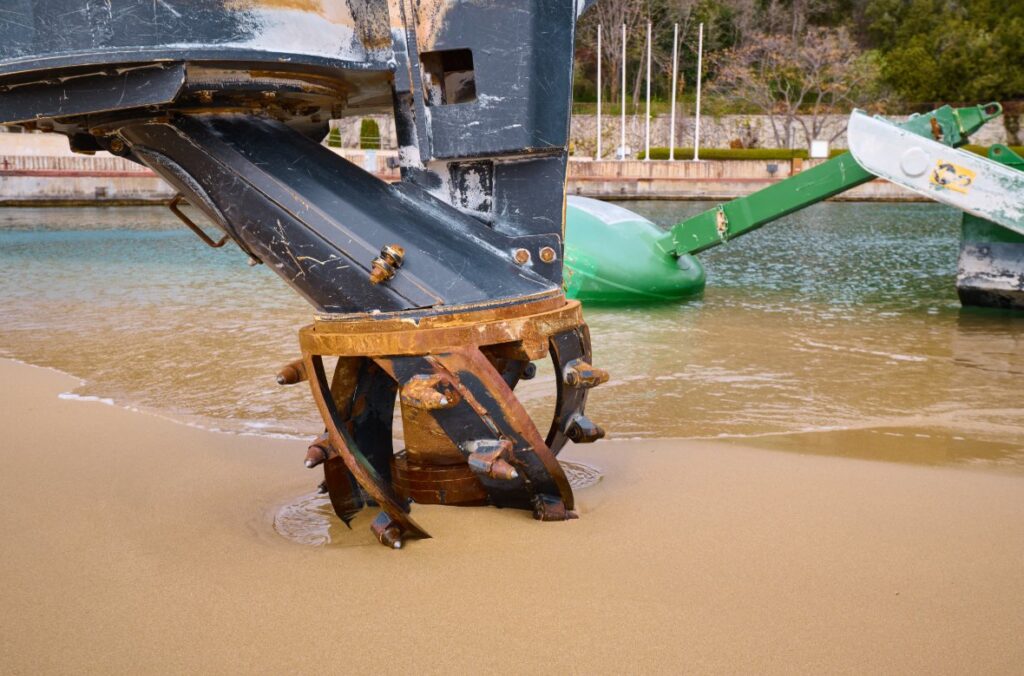
Selecting the right pond dredging equipment requires careful evaluation of project-specific conditions to ensure effective sediment removal and long-term value. Understanding the pond’s characteristics, operational requirements, and maintenance needs will guide the best equipment choice.
Pond Size, Depth, and Type of Sediment
The physical characteristics of the pond largely determine the type of equipment needed. Shallow ponds with fine silt may only require small pond dredging equipment, while larger bodies of water with compacted sand or gravel will benefit from more powerful hydraulic dredging equipment. Understanding sediment composition—whether soft sludge or heavier materials—ensures the cutterhead and pump are capable of handling the workload efficiently.
Access Limitations and Environmental Regulations
Site accessibility often influences the choice between stationary and portable dredging setups. Narrow shorelines or landscaped residential properties may limit the use of larger machinery, making compact and modular systems more practical. In addition, compliance with local environmental regulations is essential, as some dredging projects require permits or turbidity control to protect aquatic life and nearby ecosystems.
Power Source and Pumping Capacity
The performance of pond dredging equipment depends on its pumping capacity and the availability of a reliable power source. Hydraulic dredges typically require robust engines or electric power to maintain continuous slurry movement. Matching pump capacity to the sediment volume and discharge distance ensures efficient material removal without unnecessary energy consumption.
Maintenance and Longevity Considerations
Investing in high-quality, durable components is key to reducing downtime and extending equipment life. Cutterheads, pumps, and hoses should be inspected regularly, and wear-resistant materials are recommended for abrasive conditions. For long-term use, selecting small pond dredging equipment or hydraulic dredging equipment with easily replaceable parts and minimal maintenance requirements can provide better return on investment.
Operational Best Practices for Accurate Sediment Removal
Effective pond dredging relies not only on having the right pond dredging equipment but also on using it correctly. Following operational best practices ensures precise sediment removal, maximizes equipment efficiency, and minimizes environmental impact.
Optimal Positioning and Anchoring of Cutterhead Dredges
Proper placement of the dredge is essential for consistent and accurate sediment removal. Anchoring the dredge or positioning it in a strategic pattern prevents drifting and ensures even coverage of the pond bottom. This is particularly important when using small pond dredging equipment, where stability can significantly affect efficiency in confined spaces.
Adjusting Cutterhead Speed for Different Sediment Types
Sediment conditions vary from soft silt to compacted sand or gravel. Adjusting the cutterhead rotation speed allows operators to handle each type effectively. Lower speeds reduce turbulence and protect aquatic habitats, while higher speeds break through more resistant layers. Pairing this approach with hydraulic dredging equipment ensures the sediment is efficiently pumped as slurry without clogging the system.
Using GPS or Sonar for Precise Dredging Paths
Modern dredging operations benefit from GPS and sonar technology to track cutterhead positioning and sediment depth in real time. This helps operators avoid unnecessary over-excavation and ensures the project meets depth targets. These tools are particularly useful when working with larger hydraulic dredges, but portable sonar solutions are also available for small pond dredging equipment.
Routine Checks for Smooth Operation
Regular inspection of pumps, hoses, and cutterheads during dredging minimizes unexpected downtime. Checking for debris buildup, monitoring flow rates, and ensuring proper lubrication can extend the operational life of pond dredging equipment. Preventive measures like these are especially critical for small portable dredges where component wear can impact performance more quickly.
Innovations in Pond Dredging Equipment
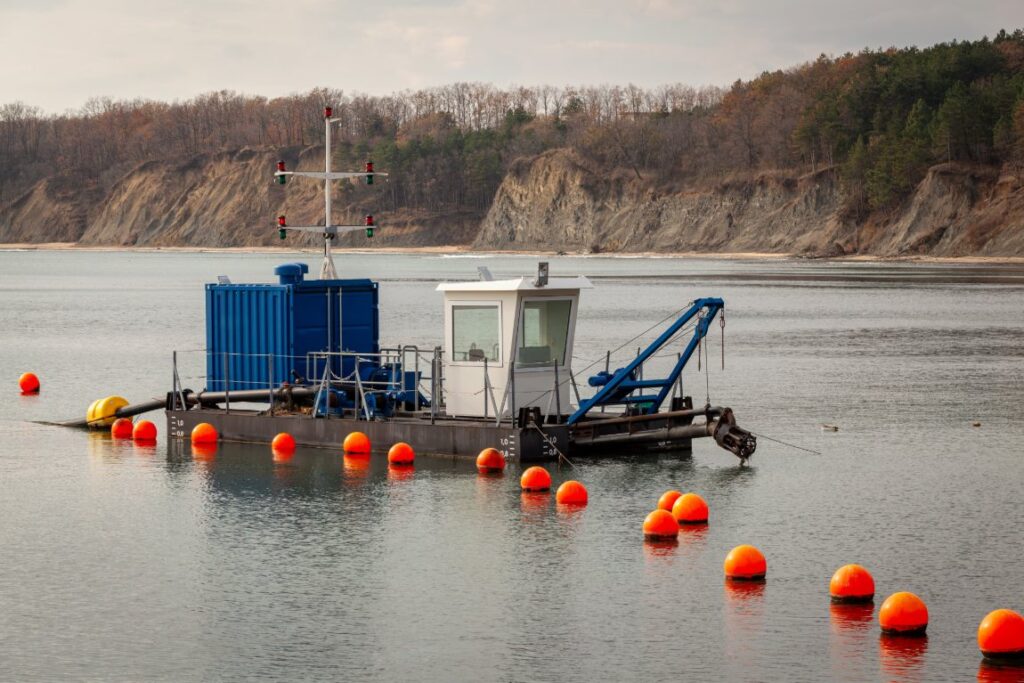
The dredging industry has evolved significantly, with modern pond dredging equipment incorporating advanced technologies to improve efficiency, accuracy, and environmental safety. These innovations make sediment removal faster, more precise, and more accessible for both large-scale and small pond maintenance projects.
Lightweight and Modular Cutterhead Systems for Small Ponds
One of the most notable advancements is the development of compact, modular cutterhead systems designed for small pond dredging equipment. These units are easier to transport and assemble on-site, reducing setup time and operational complexity. Despite their smaller size, they maintain the power and efficiency needed for accurate sediment removal in residential or confined water bodies.
Remote Operation and Automation
Modern hydraulic dredging equipment increasingly offers remote operation and automated control features. Operators can manage dredging activity from the shoreline or even off-site, improving safety by reducing the need for personnel to be on floating platforms. Automated positioning systems also enhance precision, ensuring the cutterhead follows planned dredging paths and achieves the desired pond depth without excessive disturbance.
Eco-Friendly, Low-Turbidity Cutterheads
Environmental considerations have driven the creation of cutterheads designed to minimize turbidity. By reducing the amount of suspended sediment in the water during operation, these specialized tools help preserve water quality and protect aquatic ecosystems. This is particularly beneficial in residential settings or ecologically sensitive areas where pond restoration must meet regulatory standards.
Integration of GPS and Sonar Technology
Many advanced dredging systems now integrate GPS mapping and sonar imaging to monitor sediment levels in real time. This allows for highly targeted dredging and prevents over-removal, which can destabilize pond ecosystems. These tools, when paired with hydraulic dredging equipment, streamline operations and reduce both time and cost for maintenance projects.
Maintenance Tips to Maximize Equipment Lifespan
Proper maintenance is crucial for ensuring that pond dredging equipment continues to operate efficiently and reliably. Routine inspections, timely repairs, and the use of quality replacement parts can significantly extend the lifespan of both large hydraulic dredges and small pond dredging equipment.
Regular Inspection of Cutterhead and Pump Components
The cutterhead and pump are the core components of any dredging system. Regularly inspecting these parts for wear, damage, or debris buildup ensures consistent performance. In hydraulic dredging equipment, checking for leaks or blockages in hoses and pipelines helps prevent unexpected downtime and costly repairs.
Lubrication and Protection of Moving Parts
Friction and exposure to water can accelerate wear on rotating and mechanical parts. Applying proper lubrication to bearings, gearboxes, and cutterhead drives reduces mechanical stress and helps maintain operational efficiency. Additionally, using corrosion-resistant coatings can protect metal components from rust in long-term pond applications.
Flushing and Cleaning After Each Operation
After completing a dredging project, it is essential to flush the system with clean water to remove residual sediment and prevent clogs. This is especially important for small pond dredging equipment, where narrow pipelines and compact pumps are more susceptible to blockages. Cleaning the system immediately after use reduces buildup and keeps the equipment ready for future operations.
Monitoring Wear and Planning Preventive Maintenance
Tracking wear patterns on high-contact components like cutter teeth, pump liners, and hoses allows operators to schedule replacements before failures occur. Incorporating preventive maintenance schedules into routine operations not only prolongs equipment life but also ensures that hydraulic dredging equipment remains productive during critical projects.
Choosing the Right Cutterhead Pond Dredging Solution
Investing in the right pond dredging equipment makes sediment removal safer, faster, and more precise. From modular small pond dredging equipment to high-capacity hydraulic dredging equipment, the right tools can extend your pond’s lifespan and prevent costly maintenance issues. For professional guidance, equipment support, or complete pond restoration services, WA Dredge Contractors is your trusted partner for accurate and efficient pond dredging solutions.


